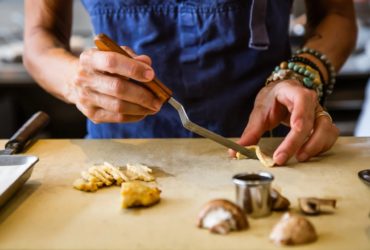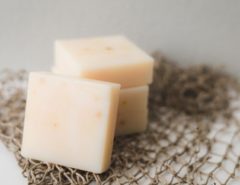Exploring Cottage Foods: A great way to get started for smaller-sized food producers
By: Janice Cheng

Have you ever made some really good jam or cookies and thought I would love to sell these at a farmers’ market!? Or wondered if you could start a food empire (just like Martha Stewart!) from your very own kitchen at home? As someone who loves cooking and baking, I have definitely thought about how I can make some extra money doing something I love. If this is a business idea you want to explore, it is pretty simple to get started!
Most states have Cottage Food Laws to tell you what foods you are allowed to sell, where you can sell them, and if there is a limit to how much you can make selling food from your home kitchen before having to adhere to more vigorous regulations. The whole point of the Cottage Food Law is to present community members with the opportunity to share their secret recipes without having to rent out a licensed kitchen or be subjected to special inspections, while making sure that your customers don’t get sick from eating the food you make.
You may think that the food you’re making is safe – I mean, you cook for your family every day, and no one has ever gotten sick, but small actions such as forgetting to wash your hands after petting your dog or making peanut butter and chocolate chip cookies at the same time may cause someone to get sick. In the case of the pets, there may be a risk of cross-contamination, and in the case of the peanut butter cookies, there would be an allergen cross-contact problem. Therefore, it is important to complete food safety training to learn more about topics such as safe food handling and product labelling so we can continue to make food safely.
The first thing you’ll need to check is if what you’re planning to sell is considered a cottage food. Cottage food are foods that a person makes in their own home to sell directly to customers. To sell at farmers’ markets, events, or roadside stores, most states only allow non-potentially hazardous cottage foods. Generally, non-potentially hazardous foods are foods that do not require time or temperature controls in order to remain safe for consumption such as bread, candy, condiments, preserves, canned fruit, and pastries. Although this means that you won’t be able to sell five-course meals out of your homes, there are a lot of foods that fall under non-potentially hazardous cottage foods. Just keep in mind that the types of cottage foods that you can sell vary from state to state.
A good place to start would be this Forrager website to learn more about Cottage Foods and this U.S. Food & Drug Administration (FDA) website to learn more about food safety. Some other ways that Cottage Food Laws differ between states are where you can sell your foods, and limits to total sales. If you are unsure if the food you are making is safe for others to consume, you can always check with your local regulatory agencies e.g. the Department of Agriculture, or your local Extension office. You may also talk to your Farmers’ Market Association”. Note that Minnesota is the only state with a cottage foods producer’s association at the moment.
Special thanks to Morrine Omolo, Food Safety Extension Specialist in the Department of Food Science and Nutrition at the University of Minnesota for her guidance throughout the research and writing of this blog post.
References
Featured Images: UMN Extension
Crabill, D. (2022). Cottage Food Laws. Forrager. Retrieved December 17, 2022, from https://forrager.com/laws/
Food and Drug Administration. (2009). Evaluation and definition of potentially hazardous foods. Chapter 6: Microbiological challenge testing.
McDonald, J. (2019). The relationship between cottage food laws and business outcomes: A quantitative study of cottage food producers in the United States. Food Policy, 84, 21-34.
Omolo, M., McGoff, R., Driessen, S. M., Brandt, K., Slavin, J., & Schmitt, M. A. (2022). Minnesota Cottage Food Industry: Insights from Extension Food Safety Education. Journal of Extension, 60(3), 11.
U.S. Food and Drug Administration (FDA). (2022, February 17). Food safety in your kitchen. Retrieved December 17, 2022, from https://www.fda.gov/food/buy-store-serve-safe-food/food-safety-your-kitchen
 About the Author: Janice Cheng
About the Author: Janice Cheng
Janice completed her B.S. in Food Science in 2020 at the University of Wisconsin-Madison. After working a Quality Assurance role in a bakery manufacturing facility, she decided to pursue a M.S. degree in Food Science at the University of Minnesota – related to baking as well! Her research involves developing alternative formulations to enable local artisanal producers to make baked goods containing fruit/vegetable inclusions in accordance with local cottage food laws.






Leave a Reply